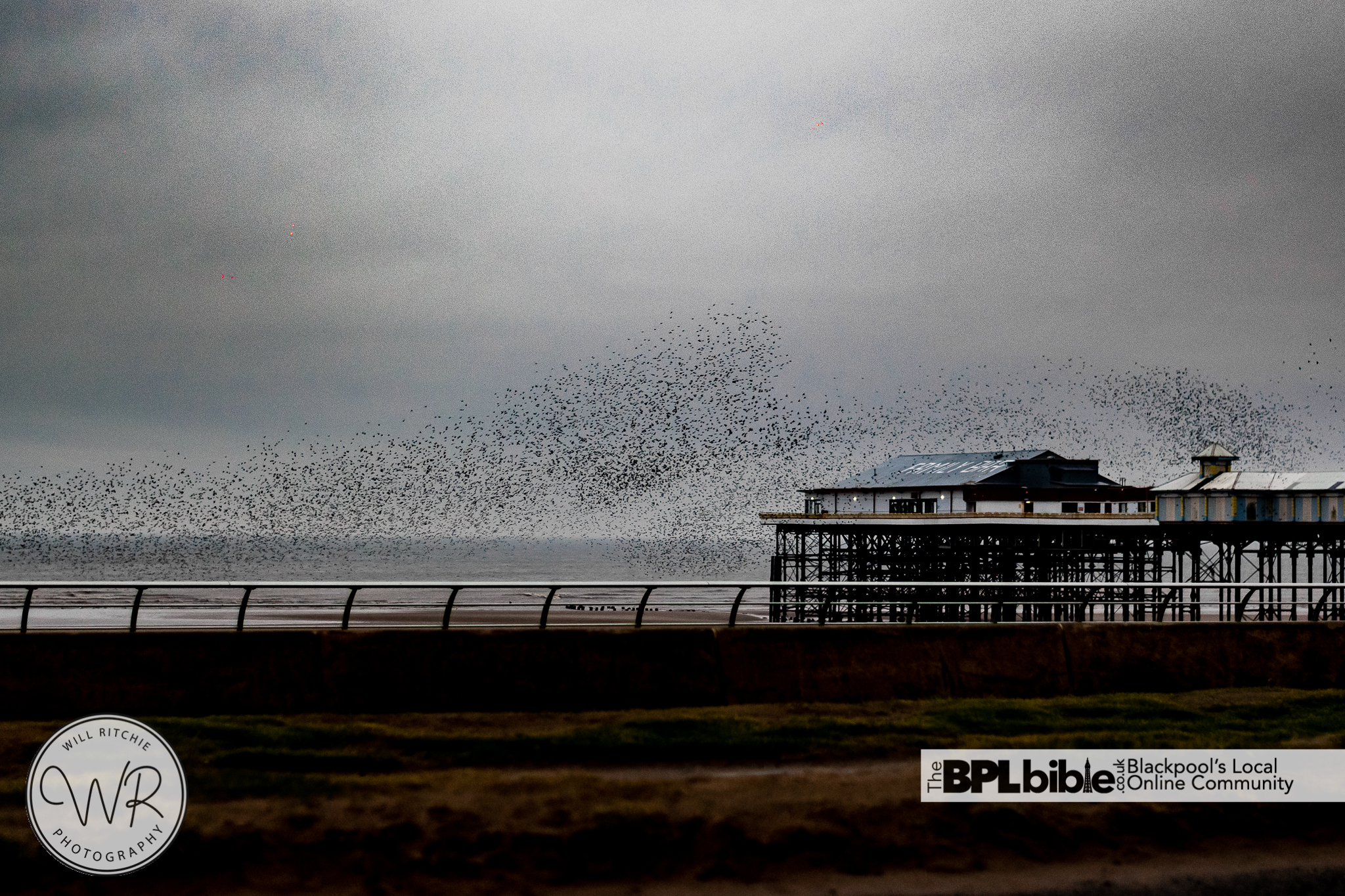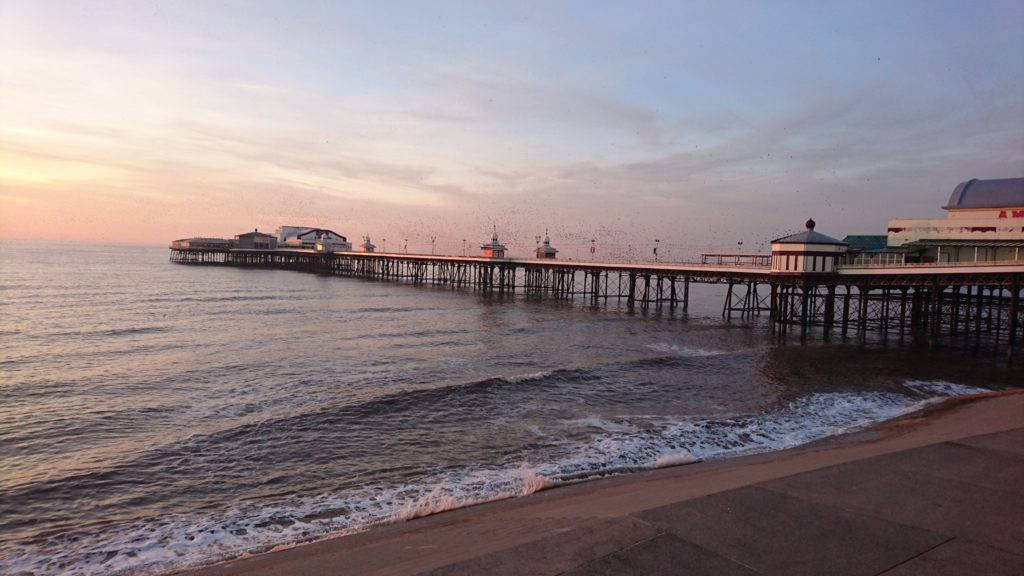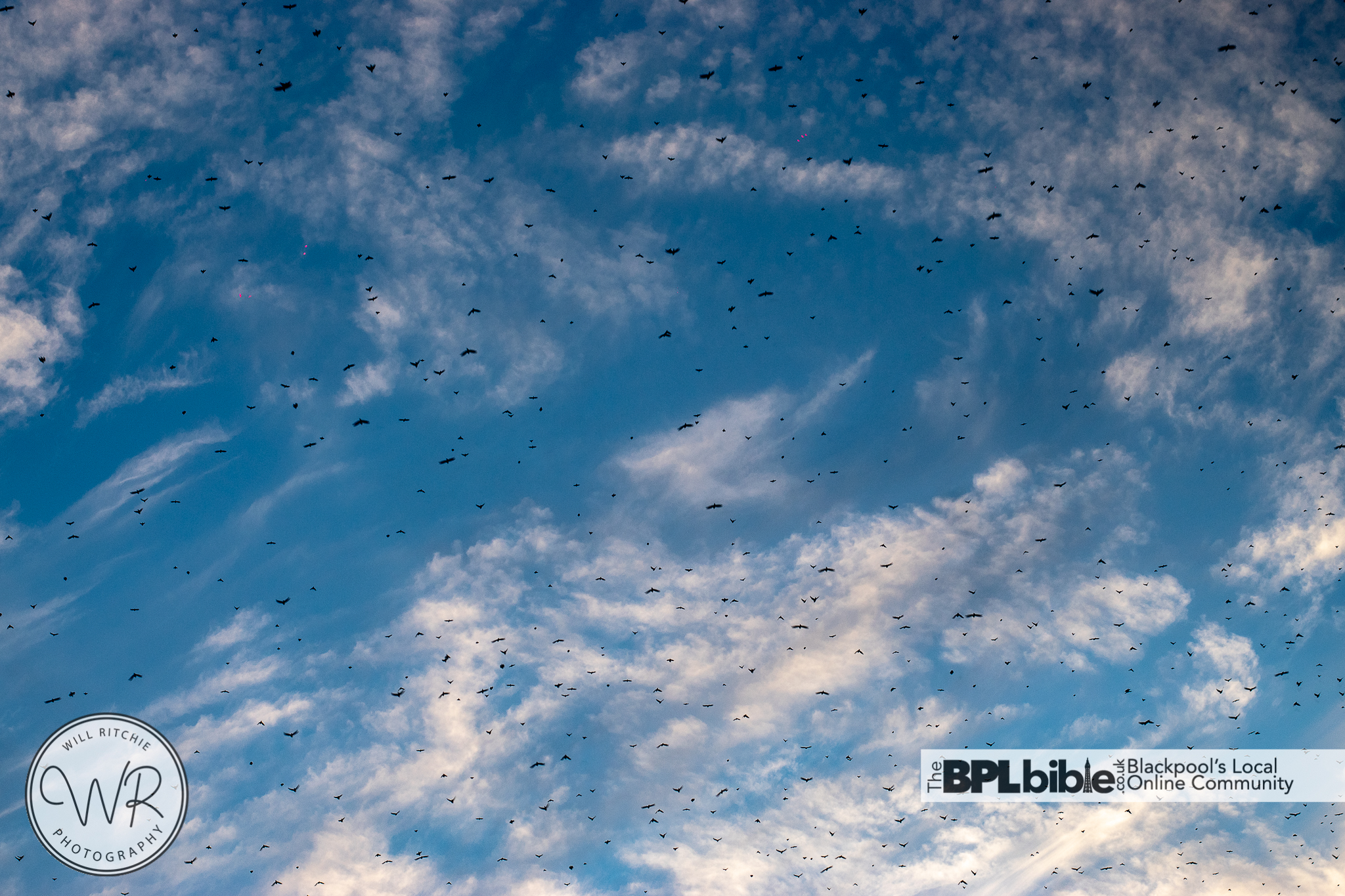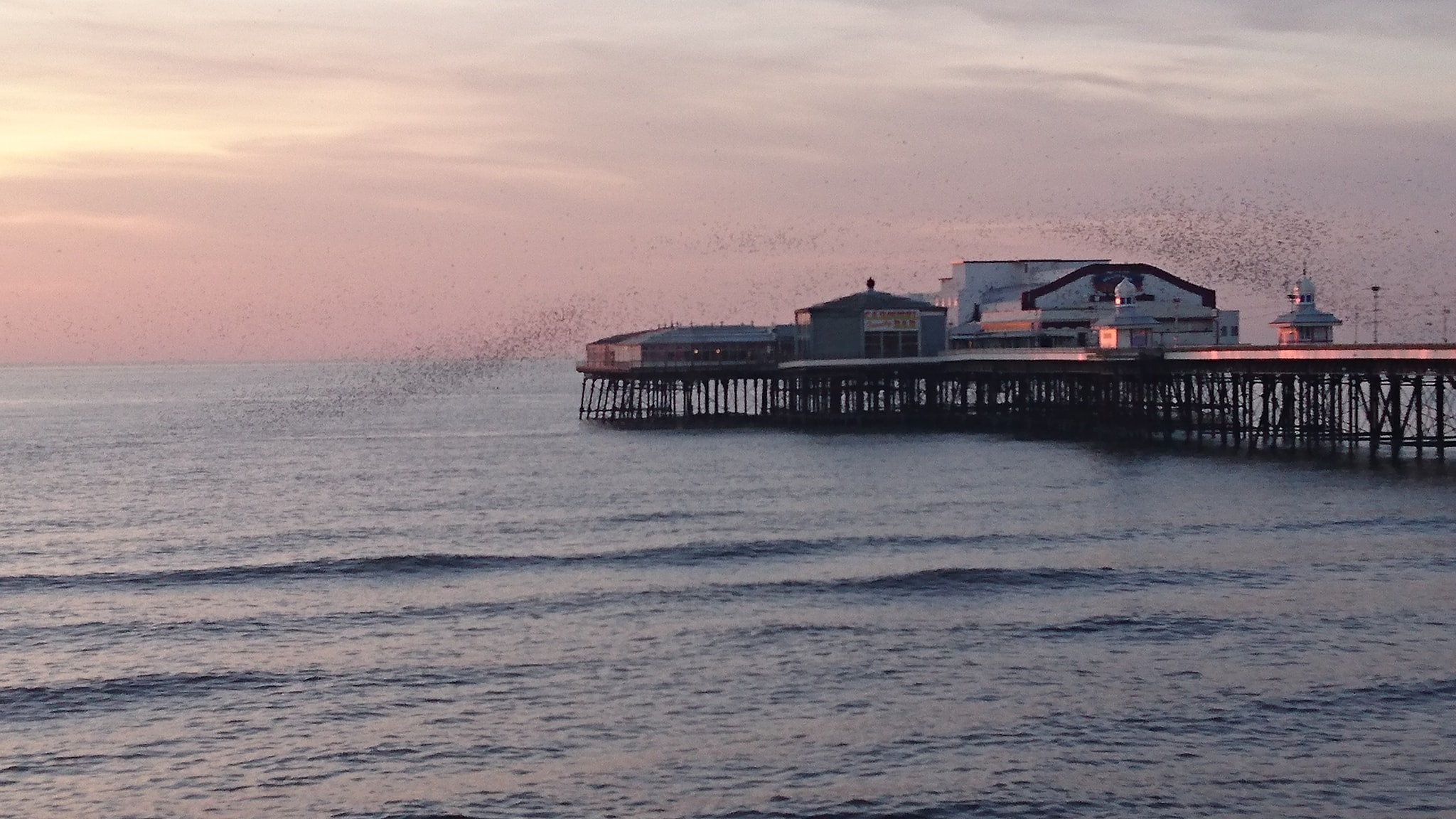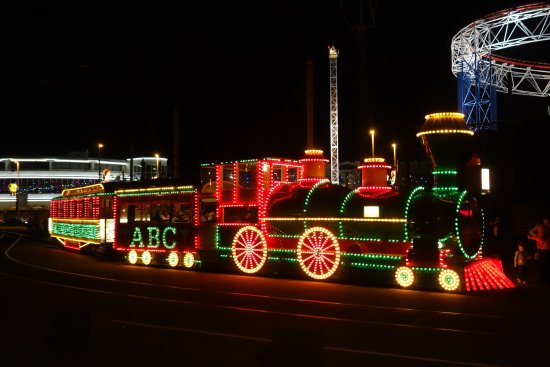If you live in Blackpool or nearby, you must have seen the starlings by now that fly over to North Pier every evening to set up camp for the night. Hundreds of thousands (we’re willing so say maybe even millions) of starlings fly in swarms across Blackpool to settle down for the night. We’ve even caught some video footage of it recently and we’re sure that many of you have your own footage and photos of this incredible sight.
The swarms of starlings dance around in the sky for a while as the group gets larger, with some birds landing on the beach if the tide is out and forming “islands” in groups. The starlings seem to prefer settling down for the night in the structure of North Pier, however many of the birds go to Central Pier too.
But what makes the starlings behave the way they do? Have you wondered? We have had a few questions ourselves, so we thought we’d do some research and give you a bit of information about these remarkable birds.
Sponsored Ad

Why Fly Together?
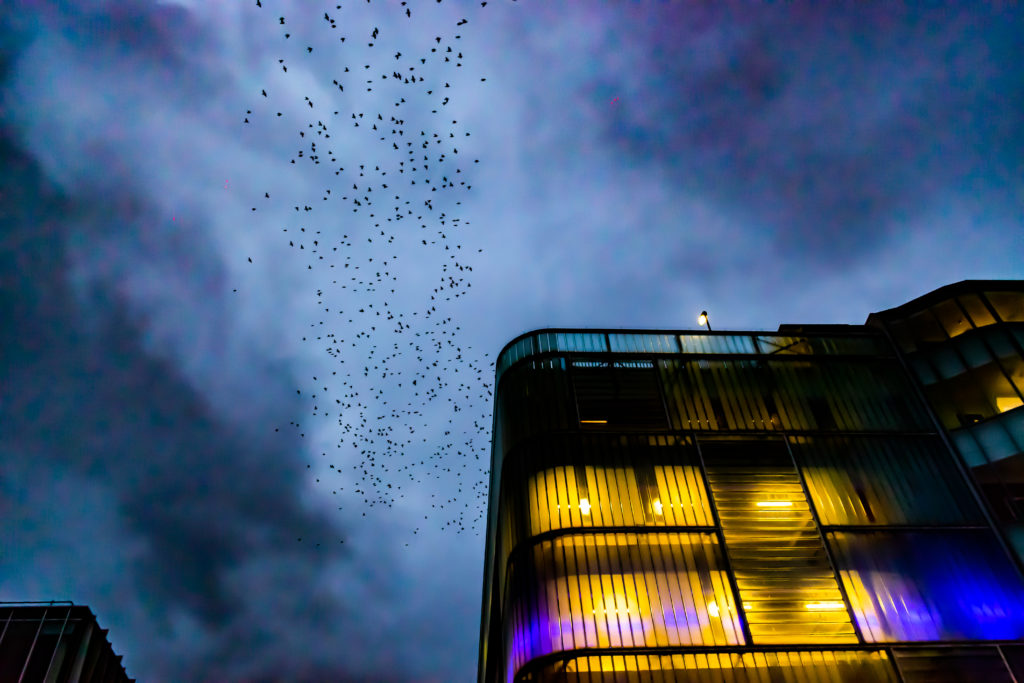
Birds of a feather flock together as the saying goes, and that couldn’t be any closer to the truth for our starling friends. The giant swarms that you see, of starlings flying through the sky, is known as a murmuration. Hundreds and even thousands of birds fly together in graceful patterns, circling and diving together.
The murmuration is important to the starling population since it acts as a signal to the other starlings that it is time to fly to their roost for the night and they communicate with each other as they go.
Safety in numbers is key when you’re a small fish in a feathered world. If you’re a species as tiny as a starling, you are definitely easy prey to bigger birds. Peregrine falcons and other such birds of prey are a real threat to these dainty starlings. Swirling and swarming together makes it difficult for a predator to single out one particular bird. Think of it as a confusion tactic.
More birds mean that it’s warmer. In the colder winter months, temperatures can really plummet and so it’s crucial to find a way of keeping warm. Roosting in large numbers means that all the birds can share each others’ warmth and this actually helps them to survive the colder autumn and winter months.
Flying together allows the starlings to communicate with each other. Not only can they tell each other where to roost (which helps the murmuration to increase in numbers) but they can also tell each other where the best places are to feed and hang in the daytime (it’s like they’re tweeting, or like a trip adviser for starlings!).
Sponsored Ad

Where Do They All Come From?

Clearly, there are not hundreds of thousands of birds just chilling on the streets in Blackpool until it’s time to go to the pier for the night, so where do all these birds come from? They actually just live in the trees and fields around the Fylde coast. Many of them are sandgrown and began their life in Blackpool but as the winter goes on, the swarms get bigger and bigger. There are a large number of migratory birds that get caught up in the murmuration as smaller murmurations find the roost in Blackpool so this is what causes the swarm to grow.
Sponsored Ad

Why Fly Together?

How Many Birds In A Murmuration?
Murmerations can be cosy with just a couple of hundred starlings but displays like the ones we’ve been seeing in Blackpool lately have hundreds of thousands and even millions of starlings. They gain momentum as the year goes on since more and more birds hear about the roost.
Sponsored Ad

How Are They So Well Coordinated When They Fly?
This one is a really good question. Starlings have super fast reaction times. Under 100 milliseconds in fact! They also have amazing spatial awareness. Each starling follows the movements of the 6 nearest birds so if one bird changes direction the whole mumuration seems to do so at the same time, although really their movements are milliseconds apart. We see the delay in reaction in ripples or waves in the murmuration. That ability for them to react so fast means that they can fly around at 20mph without crashing in mid air.
When’s The Best Time To See The Murmuration?
If you want to catch some spectacular photos or if you just want to see this spectacular display, you should head down to the promenade for dusk. Currently, the mumuration happens at around 4:50pm and lasts for well over half an hour. Basically, they head to the pier at dusk before the sun sets. As the days get longer, the murmuration happens later in the day.

